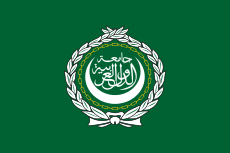Arab Argentine
| |||||||
| Total population | |||||||
|---|---|---|---|---|---|---|---|
|
1,300,000 - 3,500,000 [1] including mixed ancestry | |||||||
| Regions with significant populations | |||||||
| Buenos Aires · Córdoba · Salta · Tucumán · La Rioja | |||||||
| Languages | |||||||
| Rioplatense Spanish · Arabic | |||||||
| Religion | |||||||
|
Major: Roman Catholicism · Other Christians Minor: Sunni Islam · Shia Islam · Agnosticism | |||||||
| Related ethnic groups | |||||||
| Arabs · Arab Brazilian · Arab American · Arab Canadian · Arab Australian · Argentine Jews | |||||||
An Arab Argentine is an Argentine citizen or resident alien whose ancestry traces back to any of various waves of immigrants, largely of Arab cultural and linguistic heritage and/or identity, originating mainly from what is now Lebanon and Syria but also there are some individuals from the twenty-two countries which comprise the Arab world such as Palestine, Egypt, and Morocco. Arab Argentines are one of the largest Arab diaspora groups in the world.
Although a highly diverse group of Argentines — in ancestral origins, religion and historic identities — Arab Argentines hold a heritage that shares common linguistic, cultural, and political traditions.
The majority of the Arab Argentines are from either Lebanese or Syrian background with a smaller amount of Palestinian, Egyptian and Moroccan background.[2] Among Arab Argentines, 784,000 are Muslims.[3] The interethnic marriage in the Arab community, regardless of religious affiliation, is very high; most community members have only one parent who has Arab ethnicity. As a result of this, the Arab community in Argentina shows marked language shift away from Arabic. Only a few speak any Arabic, and such knowledge is often limited to a few basic words. Instead the majority, especially those of younger generations, speak Spanish as a first language.
History
There are some indications that the Arab Muslim presence within present day Argentinian territory dates back to the time of the Spanish exploration and conquest. The first mentioned Arab settlers were the 15th century's Moorish (Morisco) Muslims of the Iberian peninsula that were people of Arab North African descent who explored the Americas with Spanish explorers, many of them settling in Argentina who were fleeing from persecution such as the Spanish Inquisition.[4]
However, in the 19th century Argentina saw the first real wave of Arabs to settle within its territory. Most of the Arabs who came during this time period were from Lebanon and Syria (During that time, Lebanon and Syria were one territory). While Arab communities existed by 1864, systematic records did not appear before 1868. From 1891 to 1920, 367,348 people of Arabic heritage immigrated into Argentina.[2] When they were first processed in the ports of Argentina, they were classified as Turks because what is modern day Lebanon and Syria was a territory of the Turkish Ottoman Empire.[5] The causes for Arabs to leave their homeland were an accelerated increase in demographics in Lebanon, the persecution by the Ottoman Turks and the Italo-Turkish War.[2] The Arab immigrants settle in the provinces of Buenos Aires, Córdoba, Salta, Jujuy, Tucumán, La Rioja, San Juan, Mendoza, Santiago del Estero, Misiones, Chaco, and the Patagonia. A large percentage on Arabs settled in the Cuyo region (which is made up of the provinces of San Juan, San Luis, Mendoza, and La Rioja).
Notable people
- Mohamed Alí Seineldín
- Carlos Menem
- Eduardo Menem
- Omar Asad
- Julio Asad
- Claudio Husaín
- Darío Husaín
- Antonio Mohamed
- Daniel Hadad
- Juan Luis Manzur
- Yamila Díaz
- Basilio Lami Dozo
- Omar Hasan
- Alberto Hassan
- Daniel Mustafá
- Carlos Balá
- Elías Sapag
- Felipe Sapag
- Luz Sapag
- Vicente Saadi
- Ramón Saadi
- Zulema Yoma
- Eduardo Falú
- Juan Falú
- Jorge Antonio
- Javier Muñoz Mustafá
- Elias Bazzi
- Alfredo Avelín
See also
- Argentine people
- Immigration to Argentina
- Arab diaspora
- Lebanese diaspora
- Lebanese Argentine
- Syrian Argentine
- Lebanese Americans
- Lebanese Canadian
- Lebanese Australian
- Lebanese Brazilian
- Lebanese British
- Ecuadorian of Lebanese origin
- Arab Mexican
- Arab Brazilian
- Palestinian Chilean
- Islam in Argentina
- Latin American Muslims
- Islamic Organization of Latin America
- Moriscos
References
- ↑ Data vary widely among sources: 1,300,000 Worldstatesmen.org (c. 2000); 2,000,000 Islamhoy (c. 2001); 3,500,000 Inmigración sirio-libanesa en Argentina (uncertain, but more recent date)
- ↑ 2.0 2.1 2.2 Bajaron de los Barcos: Sirios, Turcos y Libaneses
- ↑ Pew Research Center. (PDF) . Retrieved on 2011-11-08.
- ↑ Muslims in American History: A Forgotten Legacy by Jerald Dirks.
- ↑ Recopilaron casi 200 años de los sirio libaneses en Argentina
External links
| ||||||||||||||||||||||||
| ||||||||||||||||||||||||||||||||||||||||||||||||||||||





